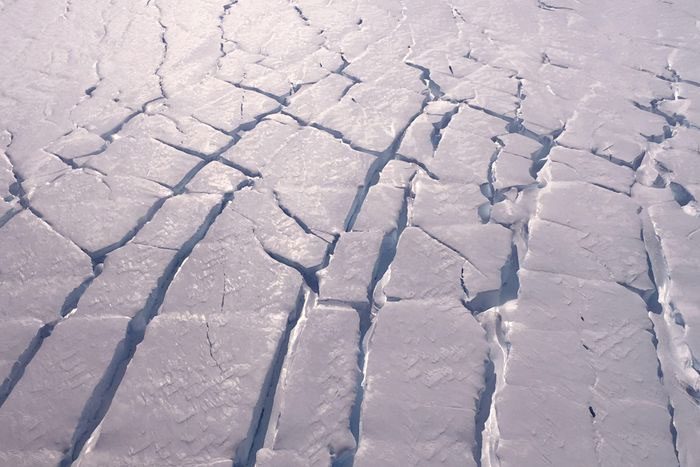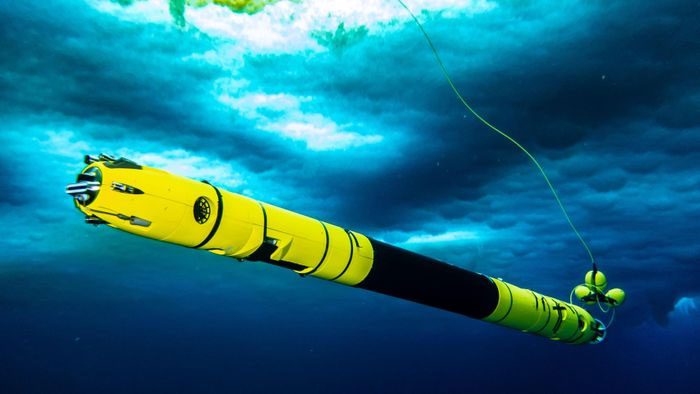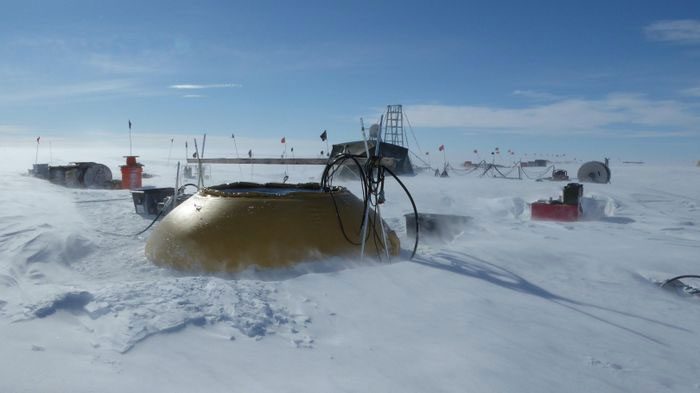Thwaites is one of the largest glaciers in the world, located in the southwestern part of the Antarctic Ocean and is considered the most crucial glacier for global sea level stability. However, according to recent studies, the Thwaites Glacier is melting rapidly in unexpected ways.
The Thwaites Glacier is roughly the size of Florida and is situated in West Antarctica. The part that keeps this glacier stationary is the ice shelf that extends over the ocean surface. This shelf acts like a cork, holding the glacier in place and serves as an important “defense” against rising sea levels.
However, the ice shelf is highly susceptible to warming oceans.
In two studies published in the journal Nature on February 15, scientists revealed that although the melting rate beneath most of the ice shelf is slower than predicted, deep cracks within the ice are melting much faster.
The Thwaites Glacier in Antarctica is dubbed the “doomsday glacier” due to the significant risk of collapse, which could lead to extreme sea level rise, according to CNN.

Cracks on the Thwaites Glacier in 2020. (Photo: ITGC).
A New Picture
As the pace of climate change accelerates, the Thwaites Glacier is also changing rapidly. Each year, it pours billions of tons of ice into the ocean, contributing to about 4% of annual sea level rise.
The melting is especially rapid at the point where the glacier meets the seabed. Scientists have discovered that the glacier is grounded beneath the seabed rather than on dry land. As a result, warm ocean currents can melt the ice from the bottom of the glacier, destabilizing it from below.
The complete collapse of Thwaites could lead to sea level rises of over 70 centimeters, enough to devastate coastal communities worldwide.
Furthermore, Thwaites also acts as a natural dam for the surrounding ice in West Antarctica. Therefore, if Thwaites collapses, scientists estimate that global sea levels could eventually rise by about 305 centimeters.
They also warn that although this process could take hundreds or even thousands of years, the ice shelf could still melt much faster, making the glacier’s shrinkage potentially irreversible.
At the end of 2019, a team of American and British scientists from the International Thwaites Glacier Collaboration visited the area.
Using hot water drills, they drilled a hole nearly 600 meters deep into the ice over a span of five days and deployed several instruments to take measurements.
These instruments included a torpedo-like robot named Icefin, which allowed them to access previously nearly impossible areas to survey. The remotely operated vehicle captured images and recorded data on temperature and salinity, as well as current flows.

Icefin Robot. (Photo: ITGC).
The results of the study revealed “a very nuanced and complex picture,” according to Peter Davis, an oceanographer at the British Antarctic Survey.
Scientists found that although the glacier is shrinking, the melting rate in the flatter areas beneath is slower than expected. The average melting rate is between 2 and 5.4 meters per year, slower than previous model predictions.
According to the research, melting is being hindered by a layer of cooler, fresher water at the base of the glacier, between the ice shelf and the ocean.
“Nonetheless, the glacier is still in trouble,” Davis said. “What we see is that even with only a small amount of ice melting, the rapid shrinkage of the glacier is still happening. So, it seems that it won’t take long for the glacier to become unstable.”
Second Discovery
Scientists were also surprised by the second discovery. They uncovered a much more complex underwater landscape than expected, with cracks and unusual troughs resembling staircases. These large cracks run throughout the ice shelf.
The research team noted particularly rapid melting in these areas. Warm, salty water can flow through and cause the cracks and openings to widen, creating voids beneath the ice. This contributes to the instability of the glacier.
According to the scientists, melting along the steep ice sections at the cracks and troughs “could become the main driver of the collapse of the ice shelf.”
These findings add to a series of alarming studies indicating the rapid melting of glaciers.

Drilling site on Thwaites Glacier. (Photo: ITGC).
“Warm water is infiltrating the glacier’s weak points and making everything worse,” the Washington Post quoted Britney Schmidt, a scientist at Cornell University and the head of the research team.
Previously, in 2021, scientists warned that the fate of the largest glacier in the world would be determined within the next 2-5 years, The Guardian reported.
“We know these glaciers are changing. We know it is related to ocean temperatures. We know there is melting occurring,” Schmidt said.
She noted that the latest research provides “the missing pieces” to accurately determine how this change is occurring.
David Rounce, a glacier researcher at Carnegie Mellon University, stated that the new research offers “novel insights into the melting rates at the base of the ice shelf and the mechanisms driving this melting. This is crucial for enhancing our understanding and modeling how Thwaites will change in the future.”
Davis added that this research could help provide more accurate predictions of rising sea levels, in an effort to mitigate the impacts of climate change and protect coastal communities.
He further expressed that personally, he hopes it will encourage people to “sit up and pay attention to the changes happening.”
“Even though it is happening in a remote place, the consequences will affect everyone,” Davis said.


















































